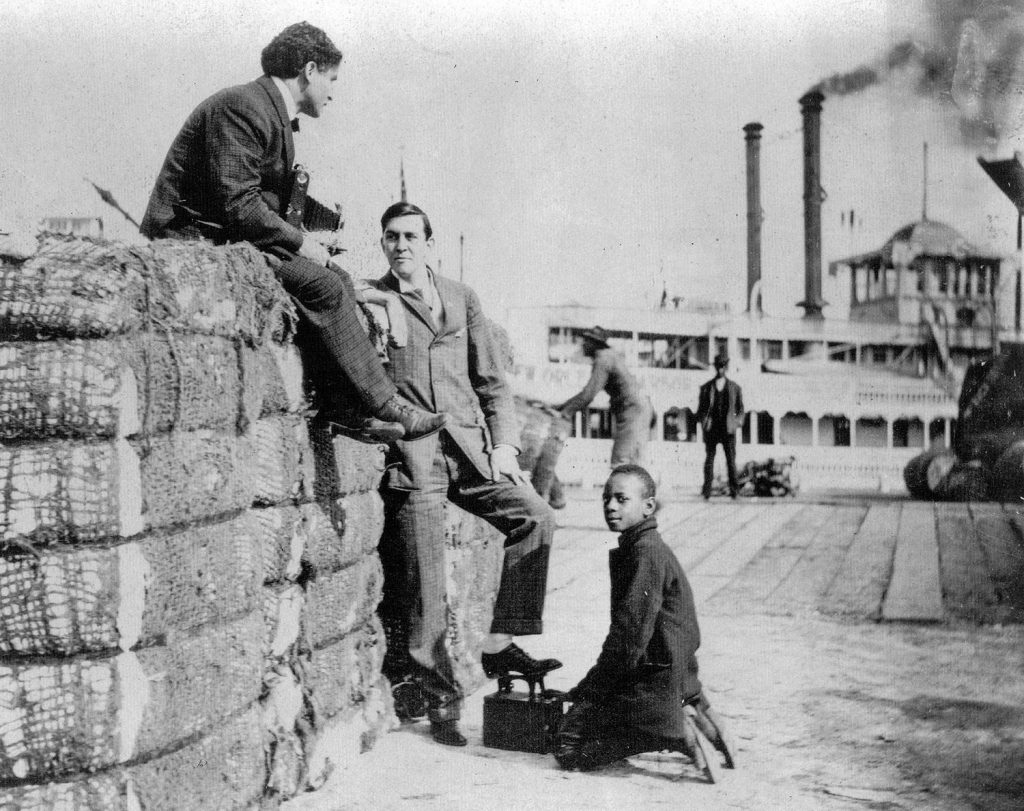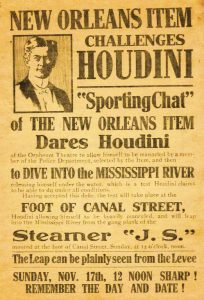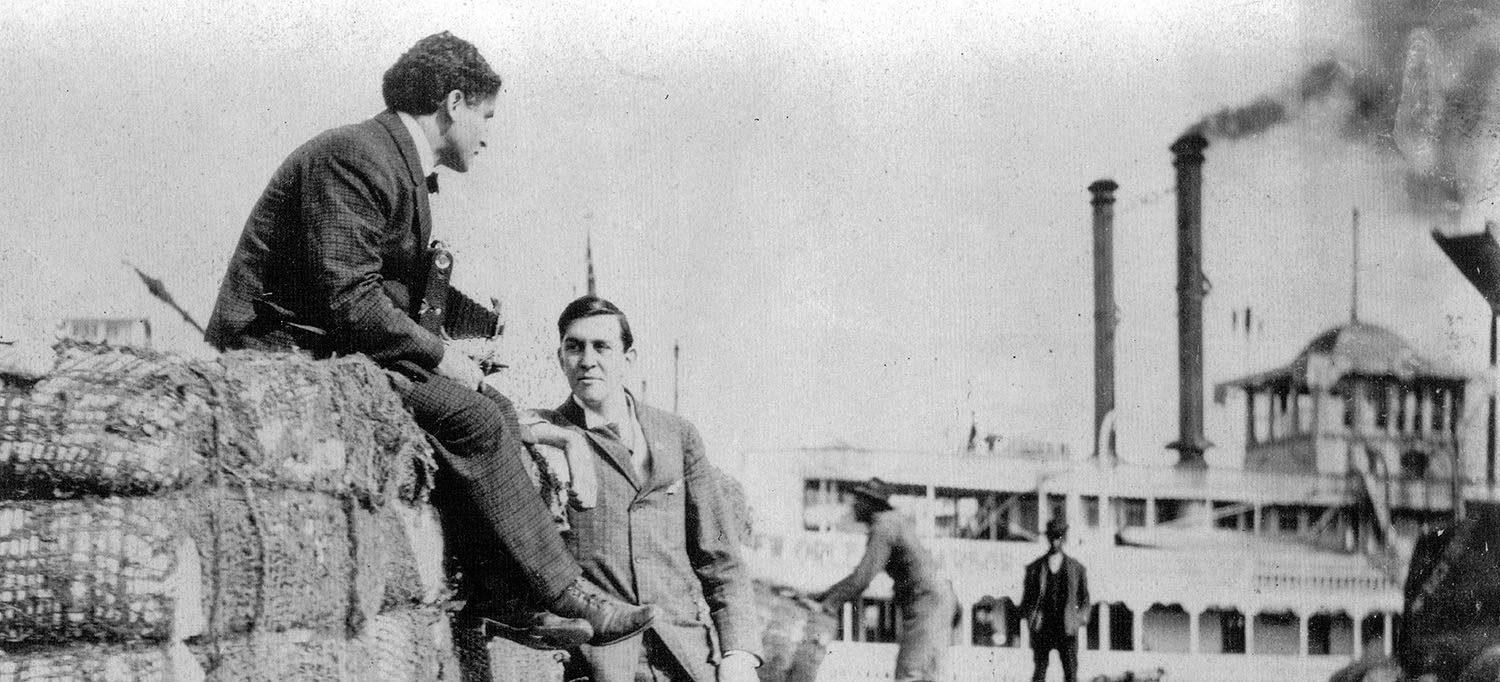
Harry Houdini (1874-1926) was an American illusionist and stunt performer, famous for his sensational escape acts. His first appearances were on the vaudeville circuit in the United States and later in Europe where, under the name of “Harry Handcuff Houdini,” he challenged police to keep him locked in a jail cell. Eventually his repertoire expanded to include chains, ropes slung from skyscrapers, straitjackets under water and escaping from inside a sealed milk can filled with water.
Houdini arrived at New Orleans in 1916 for a week of performances. It was his second visit to the Crescent City. The first was some eight years earlier, on November 17, 1907, when the showman rode by automobile to the foot of Canal Street, where he boarded the steamboat J.S. Houdini’s hands were bound behind his back with handcuffs and a heavy chain, and his feet were shackled together. Then he plunged into the muddy waters of the Mississippi. According to a story in The Picayune, a crowd of thousands stood in the pouring rain as Houdini disappeared below the river’s surface. The anxious spectators fell silent as the seconds ticked by, but they didn’t have to wait for long. After 30 seconds, a single hand emerged from the water with Houdini’s head next appearing. Shaking water from his hair, the king of handcuffs threw the irons onto the steamboat’s main deck and then swam, with sweeping strokes, toward a small floating platform that was moored to the wharf.

Houdini’s scary encounter with the river was undoubtedly the reason that, upon his return visit in 1916, he chose to perform on land. In an interview with the newspaper, Houdini said, “That’s an awful river, the worst I have ever been in. Ugh! But it was cold! And the further down I went the colder and darker it became. I said to myself then, ‘If the trick doesn’t work, I’m done for this time.’ And even while I was working hurriedly and with all my skill to get the chains off, I felt the strong current forcing me I don’t know where.” Houdini also confided to the reporter that he was so fearful of the Mississippi that he had written his will the night before.
The Steamer J.S.
The sternwheeler from which Houdini staged his stunt was built at Jeffersonville, Ind., by the Howard Shipyard in 1901 for a contract cost of $13,450. Built and named for Capt. John Streckfus, the wooden-hulled riverboat was 175 feet in length by 33 feet in width. The boat originally operated as a morning packet from Davenport to Clinton, Iowa, on the Upper Mississippi River, also running moonlight excursions out of Rock Island and Davenport. Eventually the Streckfus Company withdrew the vessel from packet service, and it became solely an excursion boat.
While returning from an afternoon cruise to La Crosse on Saturday, June 18, 1910, the steamboat caught fire at Bad Axe Island. Allegedly, a rowdy passenger who was confined to the boat’s brig (located in the hold) set the fire; he lost his life, along with a lady passenger who panicked and jumped overboard. All other passengers and crew were safely put ashore on the island and rescued by the raft boats North Star and Harriet. The J.S. burned to the waterline and was a total loss.




